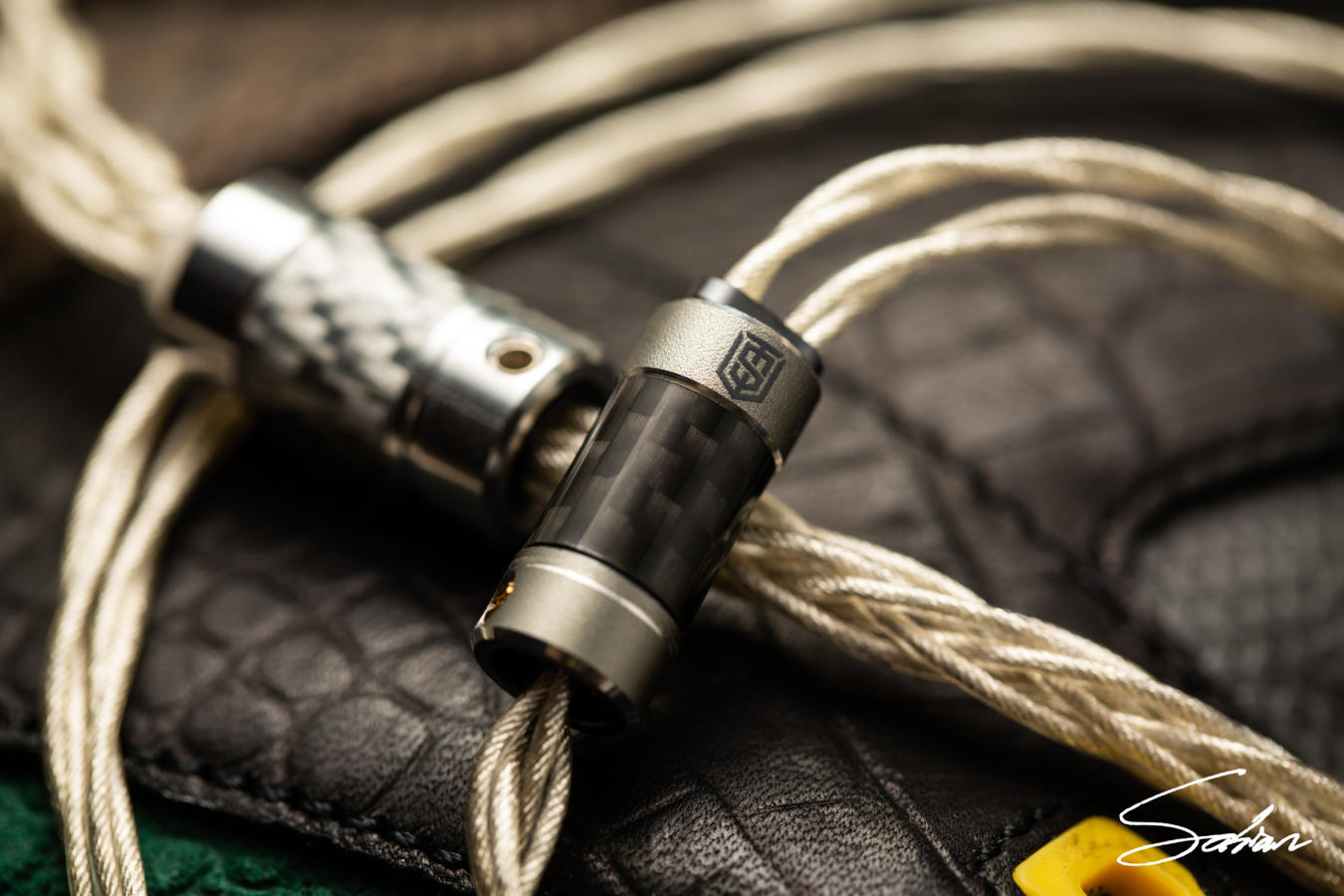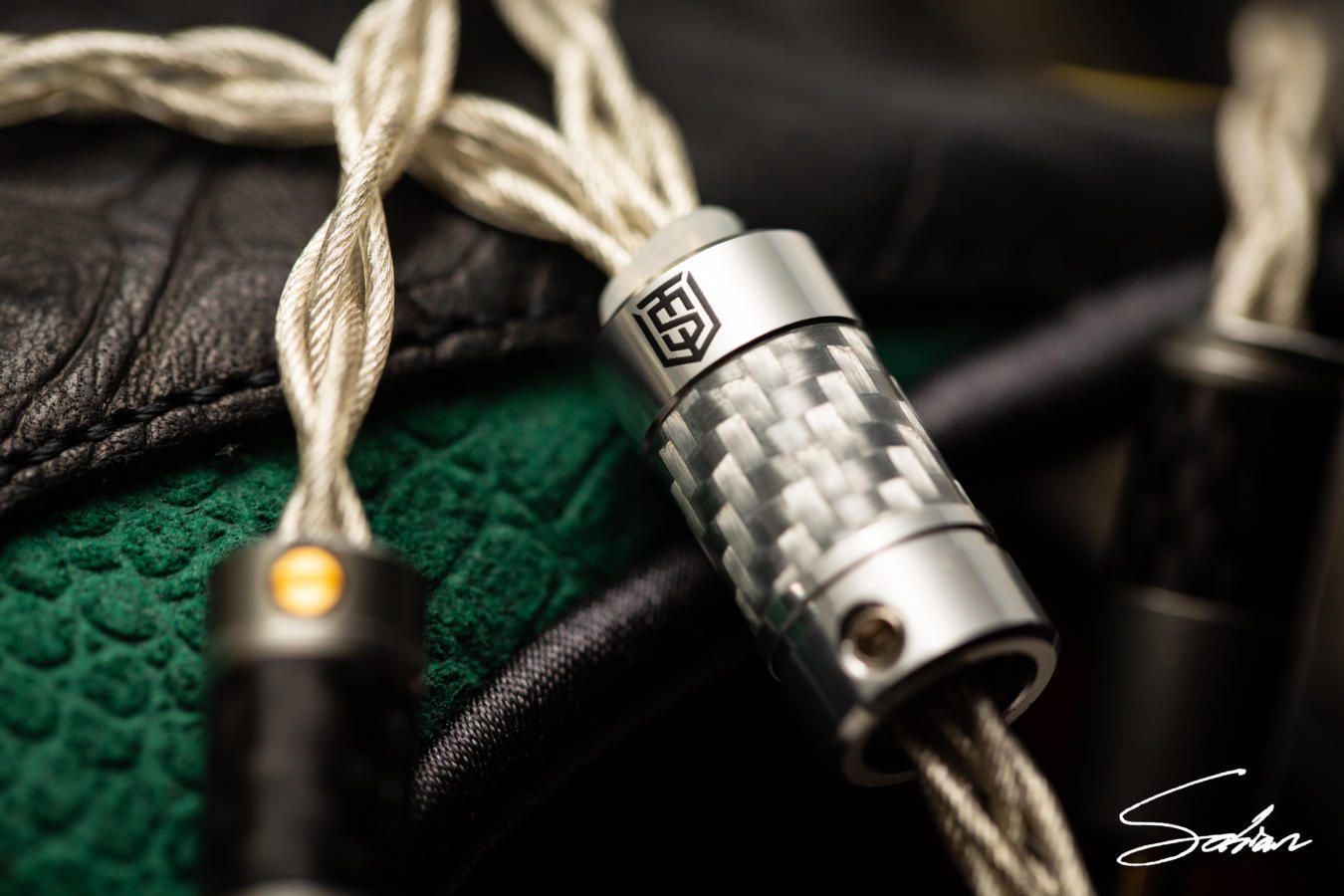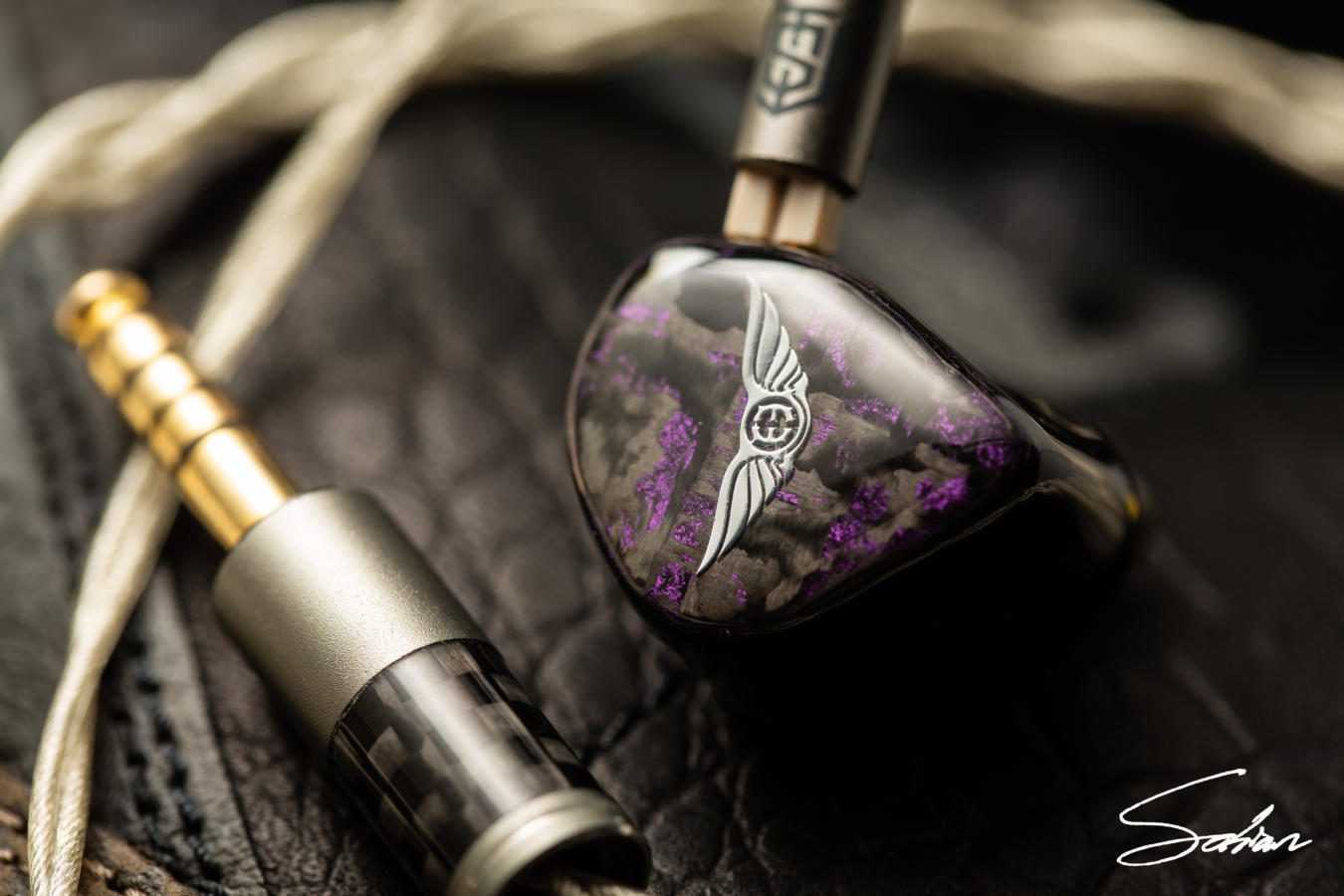Presentation
The 4-wire Athena is a cable that aims to create space, contrast and depth by cleaning up the mids, then lightly elevating the extremes. The bass has a stronger thwack to it, but not egregiously so. And, the same’s been done to the articulation (or attack) of the lower-treble. Conversely, it shaves off a bit of the heft or weight that lies in the centre-midrange. Taken together, it creates tight, punchy, articulate transients pillowed by the warmth of the low-end, paired with notes that are more neutral in both positioning and size. That generates a very tidy, spacious and airy image too. It’s a stage with a tiny bias towards depth than width, but separation and layering are strong, due to, again, how tight and snappy its notes are. And, while the mid cut does dock it in naturalness, this tone it maintains should come off well-tempered on most in-ears.

Once you go up to the 8-wire Athena, what you should immediately hear is much stronger treble extension. That’ll result in a more stable background that contrasts better against the instruments. Then, it’s got a wider stereo image as well, so instruments are positioned a bit further from each other than they would on the 4-wire version. You get a clearer idea of where one image ends and another begins. And, all that results in stronger separation and more precise imaging overall. The low-end is another region that benefits from the 8-wire design. The added headroom that comes from this high-end extension allows the lows a lot more room to bloom and decay, but whilst maintaining a similar level of cleanliness. Dave Weckl’s toms on Oytun Ersan’s Mysterious Maze hit with more weight, maintaining that presence as they decay. So, at the cost of slightly farther-sounding instruments, the 8-wire Athena lends low-end power, better separation and high-end air.
Bass
The 4-wire Athena lends presence and beefiness to the bottom-end, which enhances sounds like kick drum or floor tom thumps. Those hits dig a bit deeper, and they’re more tactile-sounding too. At the same time, though, it is a change that’s mostly localised to the sub-bass; inching ever-so-slightly towards the mid-bass. So, it won’t emphasise the warmth of the upper-bass, for example, which means minimal amounts of smoke or fat will bleed onto the space. Again, that’ll result in a cleaner, tidier stage as a whole. But, you’ll get a healthier hit of power from kicks, toms and, say, Michael Bublé’s lower, gravelly-er overtones in the process as well. It’s a bass with, again, a tactile texture too; particularly satisfying with in-ears that have warmer lows like 64 Audio’s A18s or Fourté Noir. I didn’t feel it aided calmer ones like Vision Ears’ VE7, though, so your mileage may vary. Nevertheless, it’s a fun, distinct low-end overall that serves this Athena’s fun, dynamic tonality.
Scaling up to the 8-wire Athena, the lows get a ton more room to play with. As mentioned in Presentation, the increase in top-end extension and headroom affords more space around the bass. The mids and highs are further detached from it, which lends it an even more distinct, expressive tonality. When listening to Royce da 5’9”’s Dumb for example, you’re able to hear the actual note (i.e. the key) laced within the bass line. Whereas, with the 4-wire, you’d only hear the thump of the kick and the smoke (or warmth) of this bass line. The note won’t come through as clearly. I feel the 8-wire has a tad more upper-bass because of this. But, again, the extra headroom keeps it as clean as ever. Those hits have stronger dynamics on the 8-wire as well, so they hit harder and do so with less effort. With genres like EDM or hip-hop, bass drops come off more visceral. So, this 8-wire Athena’s bass really is the 4-wire’s let loose; punchier, more complex and effortless to boot.
Midrange
The mids is probably the frequency range this Athena colours least. All it does is compact it a tad by taking away some of the boldness or weight that lies around 2kHz. It cuts out a bit of the chestiness you’d find in vocals, as well as the thud on snare drums, etc. This makes midrange notes come off lighter and quicker. So, if your IEM already has fairly light (or frail) mids, they probably wouldn’t make the ideal pair. But, those with more robust-sounding mids – like that aforementioned A18s or Custom Art’s FIBAE 7 – would match this nicely. Aside from adding speed, it also clears up the upper-mids. Those are now allowed to beam, with more clarity. Rachael Price, for example, on Lake Street Dive’s Know That I Know loses a bit of her bellowing chest voice, but gains punchier articulation in exchange, which aid the energy of the track. And, that bite contrasts nicely against its dark, beefy low-end as well, further bolstering the lively, kinetic dynamics of the Athena cable.

As mentioned above, the 8-wire delivers a cleaner, freer, more open tone, along with greater dynamic range. Because of this, the midrange now comes enveloped in a lot more clean air, which amplifies that impression of lightness and speed. Again, it’s important to pay attention to what you’re pairing it with. Richer, heavier, denser-sounding mids would be ideal here. And, similarly, that clarity and focus it adds to the upper-mids is increased as well. Because there’s “less in the way” with this 8-wire cable, you’re allowed easier access into the in-ear’s midrange layering and separation. And, because of a slightly drier timbre to the 8-wire Athena’s midrange, you’ll get cleaner-cut, slightly-sharper-etched instruments too. This doesn’t make this 8-wire Athena’s midrange any more versatile than the 4-wire’s, especially for brighter or more neutral-sounding IEMs. But, the technical and spatial changes it does bring are near-undeniable; maxing out the 4-wire’s efforts.
Treble
Up top, the Athena adds articulation by lending the low-treble a slightly harder edge; a bit of bite. Transients cut through a tad easier, and they have more impact to them too. But, this lift is very minor, and it’s tightly localised as well. The mid- and upper-treble remain uncoloured by comparison. So, though you’ll get a tad more tick to hi-hats or a bit more pop to the snare drum, it doesn’t ever bleed over into brashness, peakiness or glare. It’s a very quick treble as well, so it will not sizzle or linger either. Extension-wise, the 4-wire Athena performs decently. It’ll improve upon the huge majority of stock cables, but it won’t necessarily compete with $1000 cables like PLUSSOUND’s Exo PPH and PW Audio’s 2-wire 1960s. Still, as a whole, it’s a treble that nicely fits this Athena’s smooth, yet punchy tone; providing the articulation to the lows’ body.
As previously mentioned, the 8-wire Athena improves upon the 4-wire variant in extension. You get a cleaner, airier and freer-feeling image with a darker backdrop, better-etched instruments and more open dynamics. Instruments’ll breathe easier, and they’re placed with greater precision and authority too. Sounds spread wider, and they’ll remain where they are. Whereas, you’d get a bit of overlap or crossfeed on the 4-wire cable. The texture of the treble is a bit more apparent on the 8-wire one too, which may or may not be a good thing, depending on your preferences. There’s a bit of hardness or coarseness around 8kHz or so, which enhances that tactility of, say, hi-hats, snare wires, string plucks, etc. Still, again, it’s executed with speed and refinement. So, as long as your IEMs have fairly smooth highs too, this Athena will fare fine.
Suggested Pairings
Both Athena’s aren’t exactly shy when it comes to their colourations, and they’re certainly catered to a specific crowd, as well as IEMs. The traits below are its standouts, and they’re what you can expect to bring to your IEMs with both cables:

A fun, dynamic, yet fluid w-shaped response: What both Athena cables bring is punch, dynamism and contrast through the little peaks and dips it creates throughout an IEM’s frequency response. But, it backs it up with a beefy low-end too, so it never comes off high-heavy or artificial. This is ideal if you want to rejuvenate slower, richer in-ears with a dose of attack.
Body, attitude and drive down low: The bass is a fairly clear focus of both Athena cables. They don’t boost it per se, but it’ll certainly have more attitude, tactility and texture to it. I personally find it complements warmer, DD-driven monitors like 64 Audio’s tia Fourté or Rhapsodio’s Orla, whose rich, smoky bottoms will now be paired with the grit and grunt to match.
A slightly drier, yet more vivid midrange: A trait both Athena cables share is a slightly drier, coarser texture to the midrange. While this may or may not be a good thing, depending on pairing, what it objectively brings to the table is clarity, tidiness and separation. At the same time, it lifts the upper-midrange a bit for more vibrant, vivid lead instruments too, and more energy in general. Lastly, taking it a tier up, the 8-wire’s cleaner backdrop gifts them even better separation and contrast.

As always, with specifically-coloured IEMs or cables, there’ll be those excluded from the target demographic. Down here, I’ve listed two traits that either Athena won’t really have. So, look elsewhere if they’re what you want to add to your IEMs:
A perfectly linear, smooth-sailing sig: The Athena is a cable that’s decidedly coloured for fun, so it isn’t the place to go if you wanted a relaxed, blasé or even-handed tonality. It’ll always retain that beefy, dynamic and stimulated sound wherever it goes. So, as far as naturalness or linearity is concerned, their flagship Zeus would probably make the more fitting choice.
Rich, dense, weighty mids: One of the Athena’s hallmark colourations is its centre-midrange cut, which reduces a bit of the chestiness or boldness you’d get in most instruments. Again, it makes the midrange lighter and quicker, but it won’t help IEMs that already have light (or frail) instruments to begin with. So, keep the colouration in mind when making your pair.


